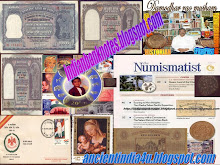About a hundred years after Tāranātha's death in the spring of 1635, and seventy-five years after the confiscation of Takten Damchö Phuntsok Ling Monastery, the Dzogchen master from Kathog Monastery in Kham, Rigdzin Tsewang Norbu (1698-1755), made a visit to Jonang to print the books that were sealed-up in the printery. Most likely spurred by a conversation with his friend and disciple Situ Panchen Chokyi Jungne (1699/1700-1774), this particular trip was actually Tsewang Norbu's third visit to Takten Ling.
Friday, July 8, 2011
Taranatha books in Ling Monastry
Tibetan antiquarian” in describing his efforts to jot down stone pillar inscriptions in Lhasa and at Samye that date from the 8th and 9th centuries, the Nyingma master Rigzin Tsewang Norbu was a lover of rare books.In fact, it seems that he was a bit of a Buddhist bibliophile.
About a hundred years after Tāranātha's death in the spring of 1635, and seventy-five years after the confiscation of Takten Damchö Phuntsok Ling Monastery, the Dzogchen master from Kathog Monastery in Kham, Rigdzin Tsewang Norbu (1698-1755), made a visit to Jonang to print the books that were sealed-up in the printery. Most likely spurred by a conversation with his friend and disciple Situ Panchen Chokyi Jungne (1699/1700-1774), this particular trip was actually Tsewang Norbu's third visit to Takten Ling.
About a hundred years after Tāranātha's death in the spring of 1635, and seventy-five years after the confiscation of Takten Damchö Phuntsok Ling Monastery, the Dzogchen master from Kathog Monastery in Kham, Rigdzin Tsewang Norbu (1698-1755), made a visit to Jonang to print the books that were sealed-up in the printery. Most likely spurred by a conversation with his friend and disciple Situ Panchen Chokyi Jungne (1699/1700-1774), this particular trip was actually Tsewang Norbu's third visit to Takten Ling.
Subscribe to:
Post Comments (Atom)







No comments:
Post a Comment